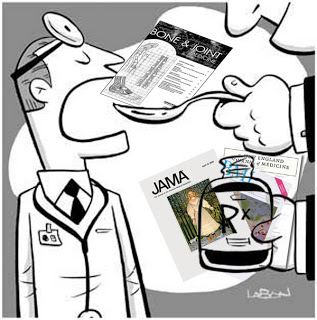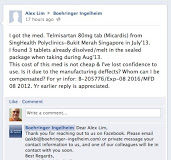 “Full disclosure” (aka, “transparency”) is a term used so often these days that it is becoming meaningless or at least so transparent as to be invisible.
“Full disclosure” (aka, “transparency”) is a term used so often these days that it is becoming meaningless or at least so transparent as to be invisible.
A case in point is the brouhaha regarding Elsevier’s publication of “fake” medical journals in Australia, which is seemingly another hotbed for pharmaceutical marketing excess.
It has been said that Elsevier “colluded with Merck to produce a fake journal, the Australasian Journal of Bone and Joint Medicine (AJBJM) to promote rofecoxib and other Merck products.” That’s how critics described it in correspondence to The Lancet — a real medical journal published by Elsevier. The authors call for Elsevier to either divest itself of of either its medical publishing or pharmaceutical services division (see here).
Elsevier admits it should not have called these publications “journals,” but was silent on whether or not it “colluded” with Merck. It just says, in effect, such a lack of “disclosure” will not happen again: “We have done a full internal review of all our publishing practices and are finalising a set of revised guidelines to ensure that this type of misrepresentation and lack of disclosure is not repeated,” Elsevier said in reply to the letter to The Lancet.
Elsevier fully intends to continue its marketing relationship — or “collusion,” if you prefer — with the pharmaceutical industry.
“It is certainly fair to raise the issue of the compatibility of medical publishing and service to the pharmaceutical industry, and we value input from the scientific community on this subject. However, it should be noted that Excerpta Medica is very clear and transparent in stating that its mission is to help pharmaceutical companies publish and market their research. This is a legitimate and important function, assisting in the dissemination of advancements in pharmaceutical research that aid medical professionals every day. When one or more companies fund the research or the publication, that information is clearly disclosed.”
There’s that word again, “disclosure” or “disclosed.”
But is disclosure enough?
I empathize with a publisher that wishes to help its advertising clients promote their products within their publications, even to the point of publishing sponsored articles. I do that myself in Pharma Marketing News. That’s all well and good for trade publications. But mixing up marketing and editorial content in the medical field is another thing altogether.
That’s why I believe there must be at least a “firewall” between marketing and publishing within the medical publishing arena. Transparency is just not enough.
If medical publishers don’t take steps more drastic than issuing guidelines about transparency, they will come under increasing scrutiny from regulators similar to that leveled against the for-profit CME industry (for more about that, see “Pharma Shifts Support of CME from MECCs to Physician Societies“).
Related blog post: “Pharma’s New Marketing Partner: Medical Journals“








![6 Digital Tools at the Center of Healthcare Digitalization [INFOGRAPHIC]](http://ec2-54-175-84-28.compute-1.amazonaws.com/pharma-mkting.com/wp-content/uploads/2021/04/6DigitalTools_600px-100x70.jpg)




